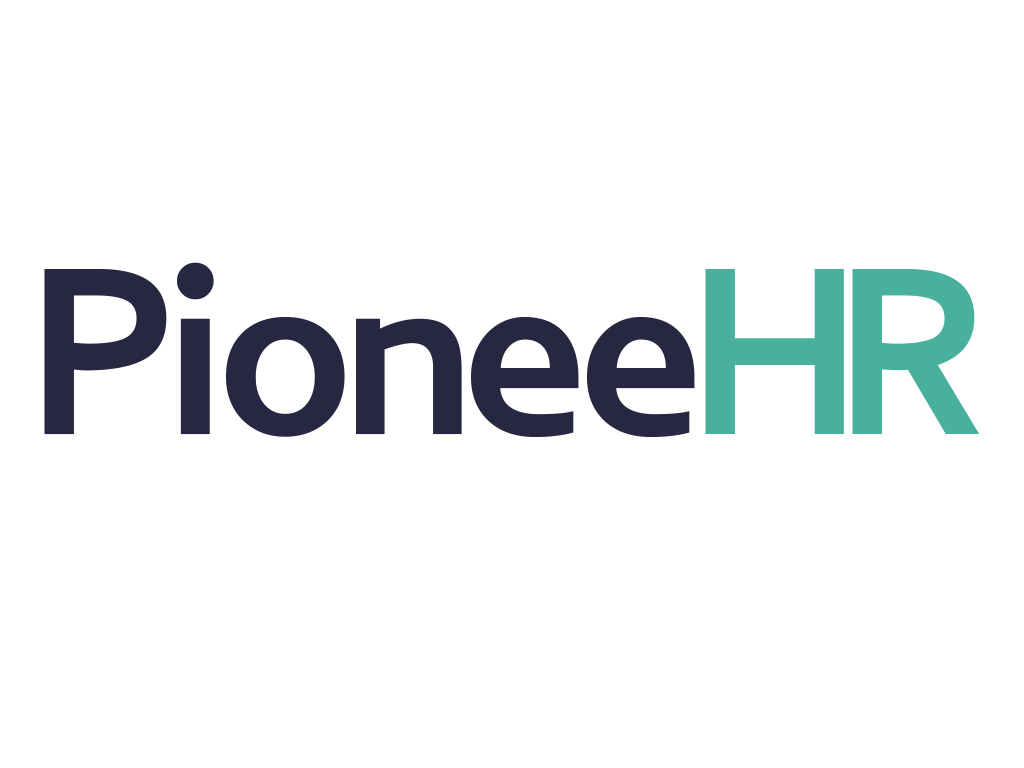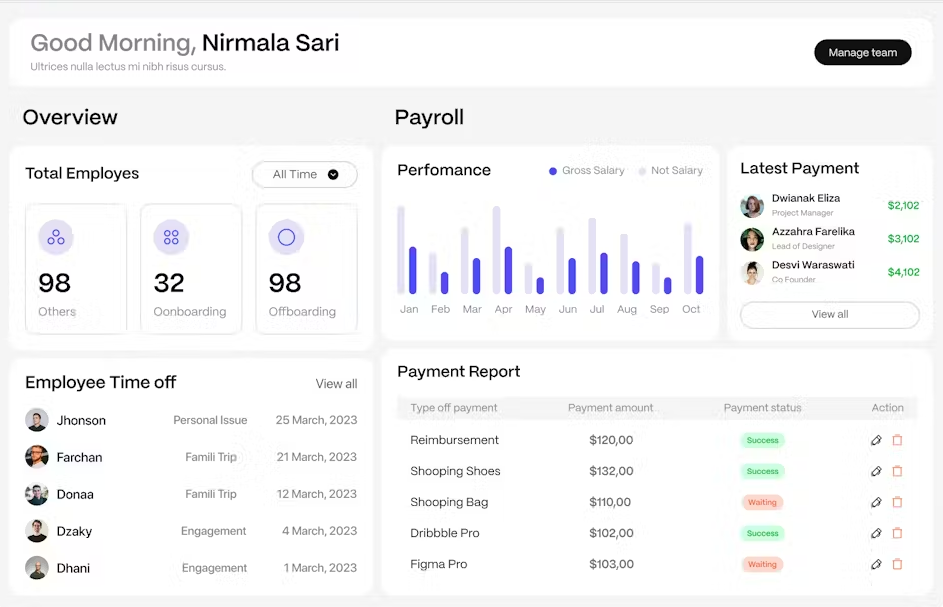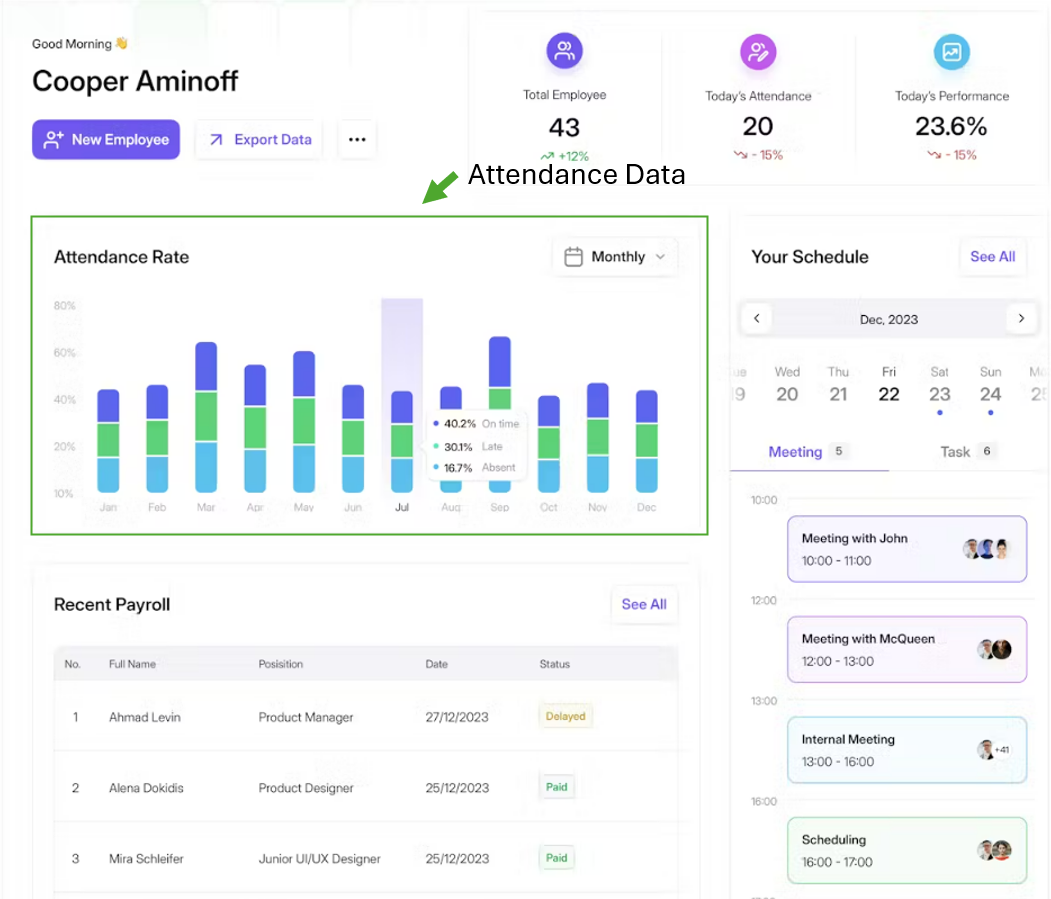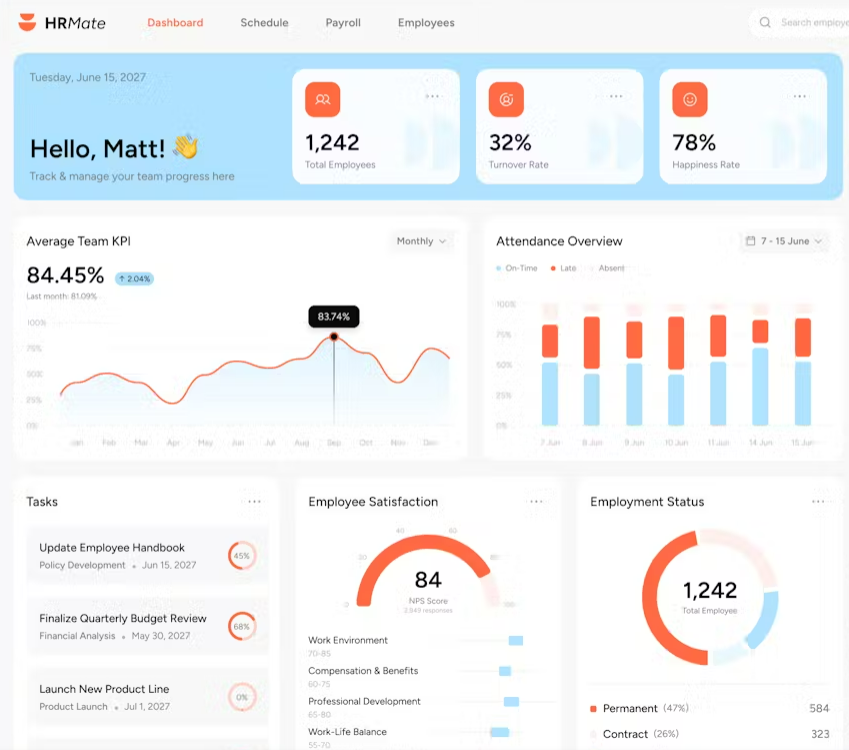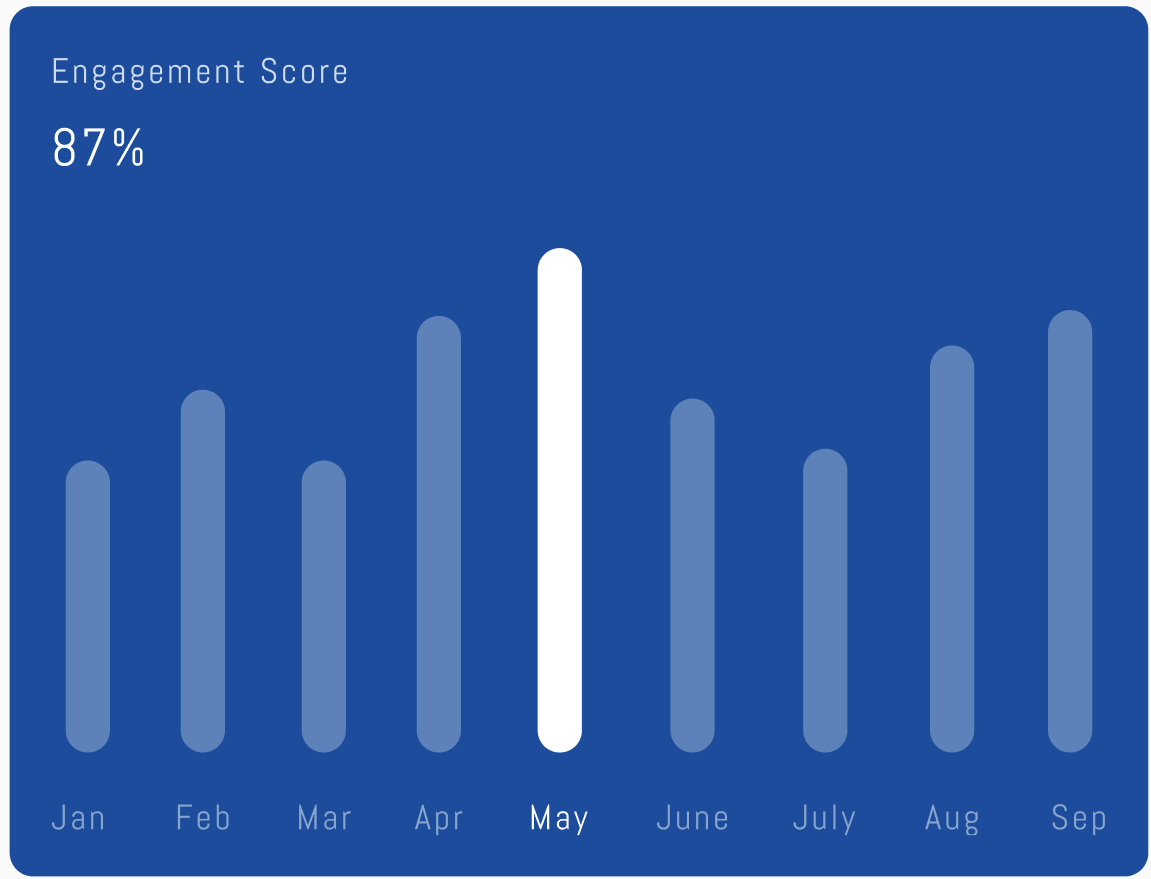People analytics, also known as HR analytics or workforce analytics, is the practice of collecting, analyzing, and interpreting data related to employees to enhance workforce management and decision-making processes.
It involves using data to gain insights into various aspects of the employee lifecycle, including recruitment, performance, engagement, and retention.
By leveraging people analytics, businesses can make more informed decisions that are backed by data rather than assumptions, leading to a more effective and efficient workforce.
For example, if a company notices a high turnover rate among its sales team, people analytics can help identify the underlying causes, such as lack of career development opportunities or inadequate compensation.
With this information, the company can implement targeted strategies to address these issues and improve retention.
Utilizing people analytics provides a concrete way to understand and improve various HR functions. It allows businesses to measure the effectiveness of their HR initiatives and align them with organizational goals.
Here are some specific advantages of using people analytics:
- Gain insights into employee performance and productivity
- Identify factors contributing to employee engagement and satisfaction
- Enhance recruitment strategies by analyzing the characteristics of successful hires
- Develop targeted training and development programs
- Predict and mitigate employee turnover
- Optimize compensation and benefits packages
The exact benefits will depend on the type of analytics employed. Let’s delve into the different types of people analytics.
People analytics can be categorized into four main types, each serving a unique purpose in understanding and managing the workforce.
Descriptive people analytics involves gathering and analyzing data to describe past events and trends. This includes metrics such as employee turnover rates, average tenure, and training completion rates.
For instance, descriptive analytics can help you understand patterns in employee attendance and punctuality over the past year. This data is fundamental as it provides a baseline for further analysis.
Pro Tip: Use HR dashboards to visualize key metrics and track changes over time, making it easier to identify patterns and trends.
Diagnostic people analytics goes a step further by exploring the reasons behind specific trends and patterns. It helps identify the root causes of issues such as high turnover or low employee engagement.
For example, diagnostic analytics might reveal that a decrease in employee satisfaction is correlated with increased workloads or inadequate managerial support. This understanding allows HR to implement targeted interventions.
Pro Tip: Conduct exit interviews and surveys to gather qualitative data that complements your quantitative analysis.
Predictive people analytics uses historical data to forecast future trends and outcomes. This can include predicting employee turnover, future hiring needs, or the impact of training programs on performance.
For instance, predictive analytics might indicate that employees who participate in certain training programs are more likely to stay with the company longer. This can inform decisions on which training programs to prioritize.
Pro Tip: Utilize machine learning models to enhance the accuracy of your predictions and uncover hidden patterns in your data.
Prescriptive people analytics combines descriptive, diagnostic, and predictive analytics to recommend specific actions that can achieve desired outcomes. It often involves the use of advanced algorithms and AI.
For example, prescriptive analytics can help you design personalized career development plans that increase employee engagement and retention. It can also suggest optimal staffing levels to maintain productivity while minimizing costs.
Pro Tip: Integrate prescriptive analytics into your HR systems to automate recommendations and streamline decision-making processes.
Implementing people analytics can seem daunting, but breaking it down into manageable steps can simplify the process. Here’s a step-by-step guide:
Begin by setting clear goals for what you want to achieve with people analytics. This will help guide your focus and establish an actionable roadmap.
SMART Goals:
- Specific
- Measurable
- Attainable
- Relevant
- Time-bound
For example, instead of setting a vague goal like "improve employee engagement," aim for a more specific goal such as "increase employee engagement scores by 15% within the next six months."
Once you’ve set clear goals, determine the most relevant key performance indicators (KPIs) to measure your progress.
Choosing the right KPIs mostly depends on your goals. As well as your team and your business model.
In most cases, it’s better to opt for monitoring the most relevant KPIs. Otherwise, you might lose focus and become overwhelmed by too much data.
That said, here are some of the most common People Analytics KPIs:
- Employee turnover rate measures the percentage of employees who leave an organization within a certain period. A high turnover rate can indicate potential issues within the workplace, such as low job satisfaction, inadequate compensation, or poor management. Monitoring turnover rate helps identify these problems early and develop strategies to improve retention.
- Training completion rate measures the percentage of employees who successfully complete training programs within a given timeframe. This KPI helps assess the effectiveness of training initiatives and ensures that employees have the necessary skills and knowledge to perform their roles. A high completion rate indicates that the training is accessible and relevant, while a low rate might suggest the need for improvements in content or delivery methods.
- Absenteeism rate tracks the frequency and duration of employee absences. High absenteeism can be a sign of underlying issues such as low job satisfaction, health problems, or poor work-life balance. Monitoring this rate helps organizations identify trends and implement interventions to improve attendance, such as wellness programs or flexible working arrangements.
- Performance ratings are assessments of an employee's job performance, typically conducted through regular evaluations or appraisals. These ratings provide insights into individual productivity, strengths, and areas for improvement. Consistent performance ratings help recognize top performers, identify training needs, and inform decisions on promotions and rewards.
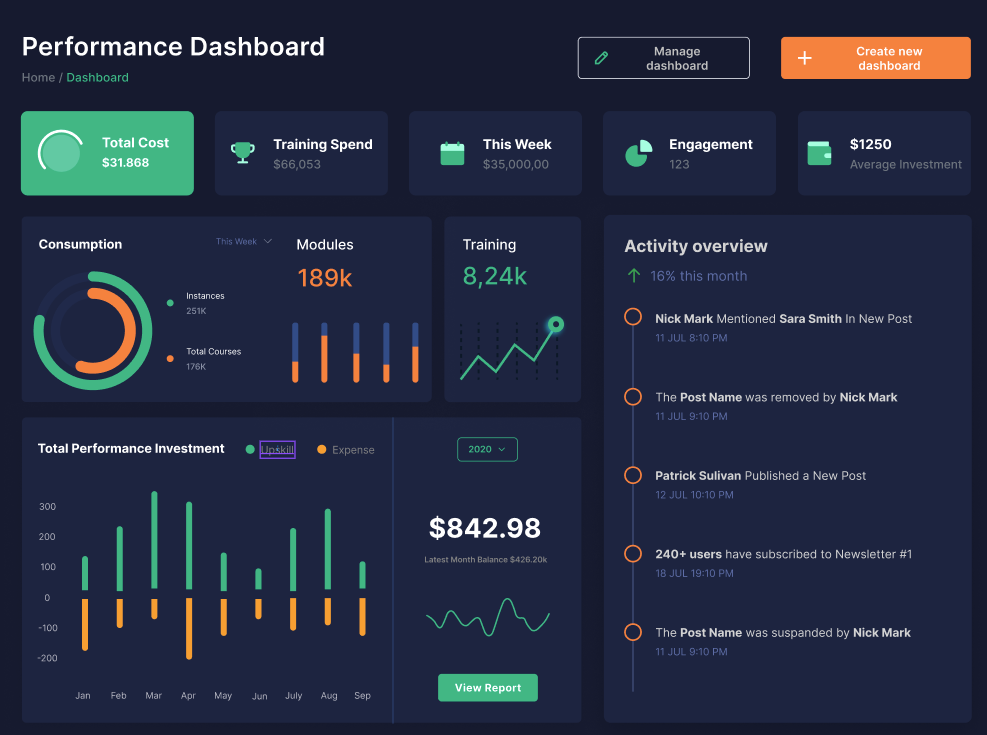
Choosing the right tools is crucial for effectively tracking and analyzing your chosen KPIs. These tools should provide the capabilities you need to collect, analyze, and visualize data.
Popular people analytics tools include:
Collecting and analyzing data is crucial for effective people analytics. Begin by identifying relevant data sources such as HR systems, employee surveys, performance reviews, and attendance records. Ensure data quality through accuracy checks and validation.
Clean the collected data by eliminating inconsistencies, duplicates, and errors. Organize the cleaned data into structured formats like databases or spreadsheets for easy analysis.
Start with Exploratory Data Analysis (EDA) to identify patterns and relationships using techniques like histograms and scatter plots. Apply various analytical methods—descriptive, diagnostic, predictive, and prescriptive—to gain insights.
Interpret results in the context of business objectives, making insights actionable. Use data visualization tools to present findings clearly to stakeholders. Continuous monitoring and regular reviews ensure strategies remain effective and adaptable.
Sharing your results is a crucial step in the people analytics process. It involves presenting data-driven insights to stakeholders in a clear and actionable manner. Utilize various reporting formats such as detailed reports, executive summaries, and visual dashboards to cater to different audiences.
Comprehensive reports provide in-depth analysis and are ideal for HR teams and data analysts. Executive summaries offer a high-level overview of key findings and recommendations, suitable for senior management. Dashboards, featuring interactive elements like charts and graphs, allow real-time data exploration and are effective for ongoing monitoring.
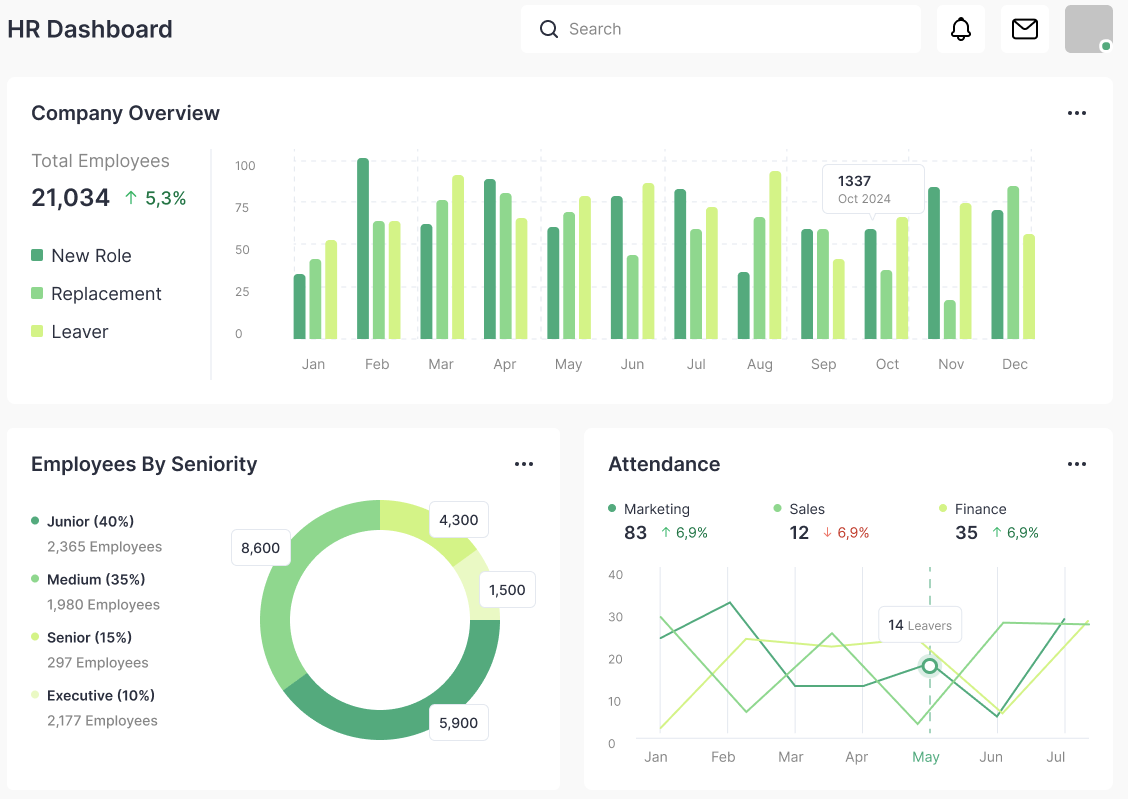
Tools like Tableau, Power BI, and custom HR dashboards can help create these visualizations. By tailoring the presentation of your results to your audience, you ensure that the insights are understood and actionable, facilitating informed decision-making and strategic planning across the organization. Regularly updating these reports and dashboards keeps stakeholders informed and engaged.
Making data-driven decisions involves leveraging insights from data analysis to inform and guide HR strategies and actions. This approach ensures that decisions are objective, evidence-based, and aligned with organizational goals. Start by defining clear business objectives and using data to identify trends, opportunities, and areas for improvement.
For instance, if data reveals high employee turnover in a department, investigate the causes and implement targeted interventions, such as improved training or adjusted compensation. Predictive analytics can forecast future trends, allowing for proactive planning, such as optimizing recruitment processes before a predicted increase in hiring needs.
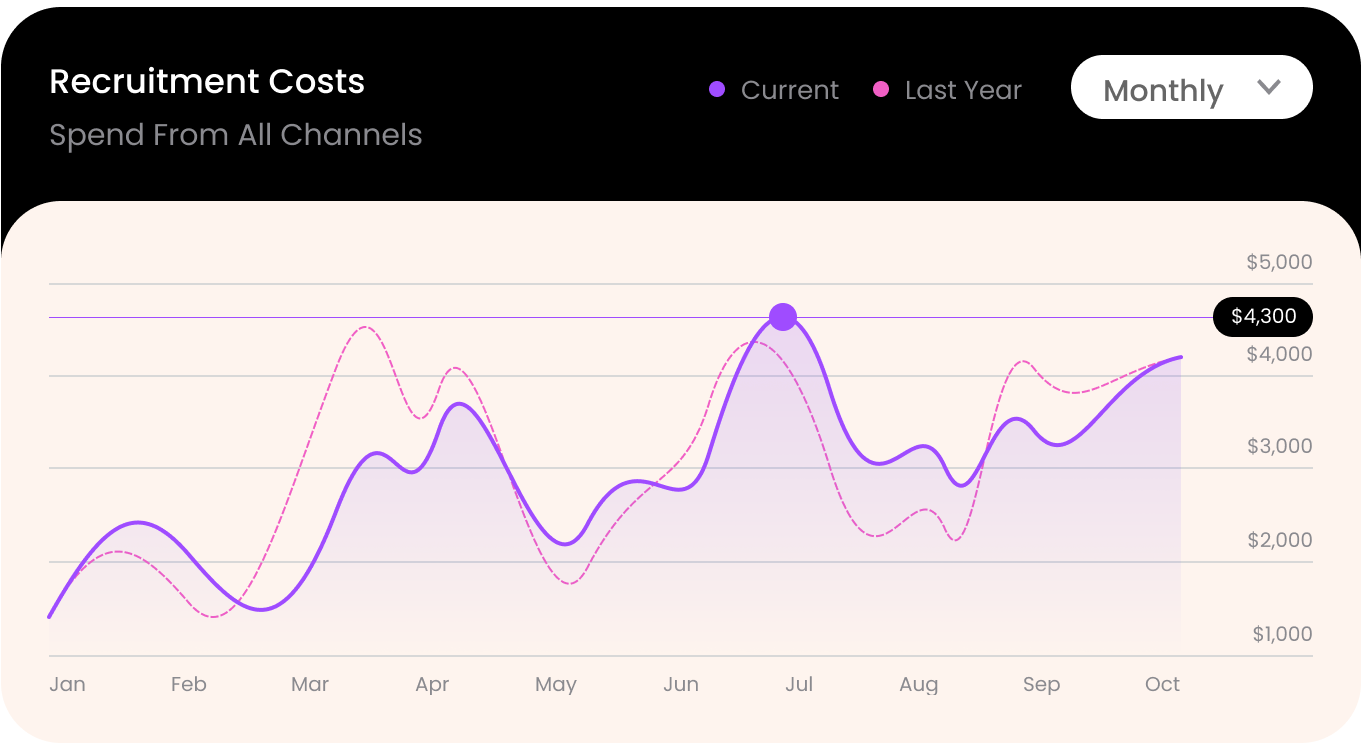
Regularly reviewing and adjusting strategies based on ongoing data analysis ensures continuous improvement. Utilize dashboards and reporting tools for real-time monitoring and effective communication of insights. By relying on data-driven decisions, organizations can enhance workforce management, boost productivity, and achieve better overall outcomes, ensuring that HR practices are both effective and strategic.
Implementing people analytics can give your organization a competitive edge by enabling more effective and efficient workforce management. By leveraging the right tools and following a structured approach, you can gain valuable insights that drive better decision-making and improved business outcomes.
